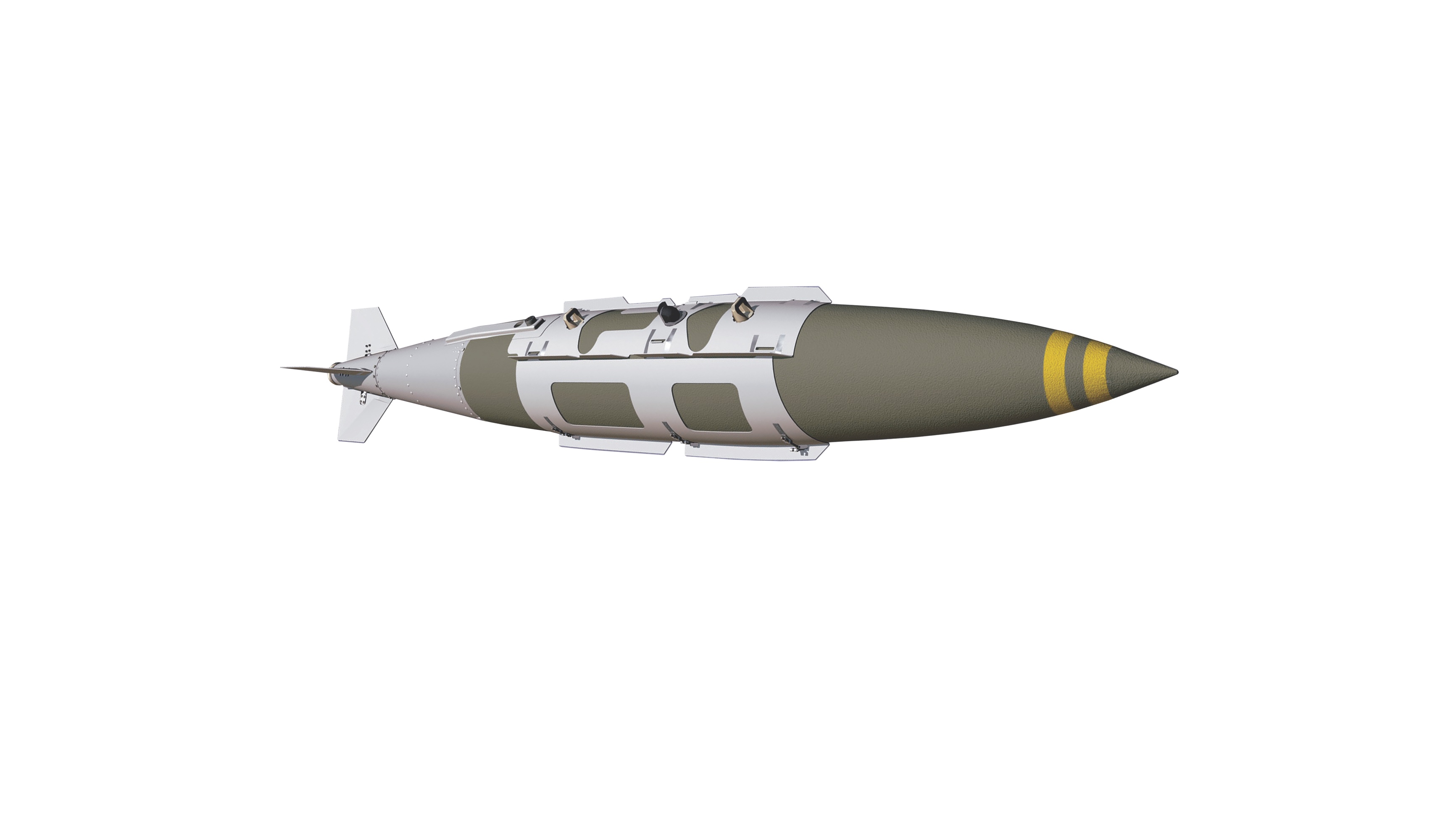What’s been called the “JDAM Revolution” began in earnest on February 10, 1993, when a U.S. Air Force F-16 Fighting Falcon dropped a single GBU-15 bomb from 35,000 feet, aiming at a target some 29,000 yards downrange. The unpowered glide weapon landed within 20 feet of the target—an astonishing level of accuracy. Subsequent tests confirmed its capabilities, and with later improvements the Joint Direct Attack Munition was born and entered service.
The tail kit guides a bomb to targets up to 15 miles away and can adjust the attack profile—the flight path and angle of descent—along the way. A new Extended Range wing modification can triple the range to 45 miles. Strake kit INS/GPS guidance unit Warhead
This feature improves airflow and bomb flight characteristics.
Once target coordinates are fed to the GPS, the INS adjusts the flight of the bomb in relation to those coordinates. The circular error probable—the radius of a circle in which 50 percent of the bombs would fall—is under 43 feet.
JDAM kits are fitted to 500-, 1,000-,and 2,000-pound bombs, creating weapons with GBU (guided bomb unit) designations.
During Operation Desert Storm in 1991, the U.S. Air Force dropped hundreds of laser-guided and infrared-imaging precision guided munitions on Iraqi targets. While many of these PGMs struck home, it became clear that airborne dust, smoke, cloud cover, or fog could significantly affect accuracy. What’s more, the guidance systems also required input from the aircraft crew throughout the descent to target. The JDAM solved all these problems. The JDAM is not itself a weapon but rather a bolt-on kit that, when fitted to an existing piece of ordnance, turns a “dumb” bomb into a “smart” bomb. Its main parts are an INS/GPS (inertial navigation system/global positioning satellite) guidance control unit, a tail section with aerodynamic control surfaces, and a body strake fitting. Target coordinates are fed to the guidance unit, and once dropped, the munition will steer itself without further input from the crew and regardless of weather or atmospheric obscuration. Some of the latest versions include a laser seeker for use against moving targets.
JDAMs have transformed bombing accuracy for a fraction of the cost of other PGMs. During their first combat outing in Operation Allied Force, NATO’s large-scale air campaign against Yugoslavia in 1999, 652 JDAMs achieved a hit rate of 98 percent on intended targets. After 9/11, JDAMs were used prolifically over Afghanistan and Iraq—20,000 of them had been dropped by 2006—and ongoing improvements ensure that they will remain the centerpiece of U.S. air-dropped ordnance for the foreseeable future. MHQ
Chris McNab specializes in military history and technology. His latest books are The M4 Carbine and Arab vs. Israeli Armour: Six-Day War, 1967, both published by Osprey in 2021.





